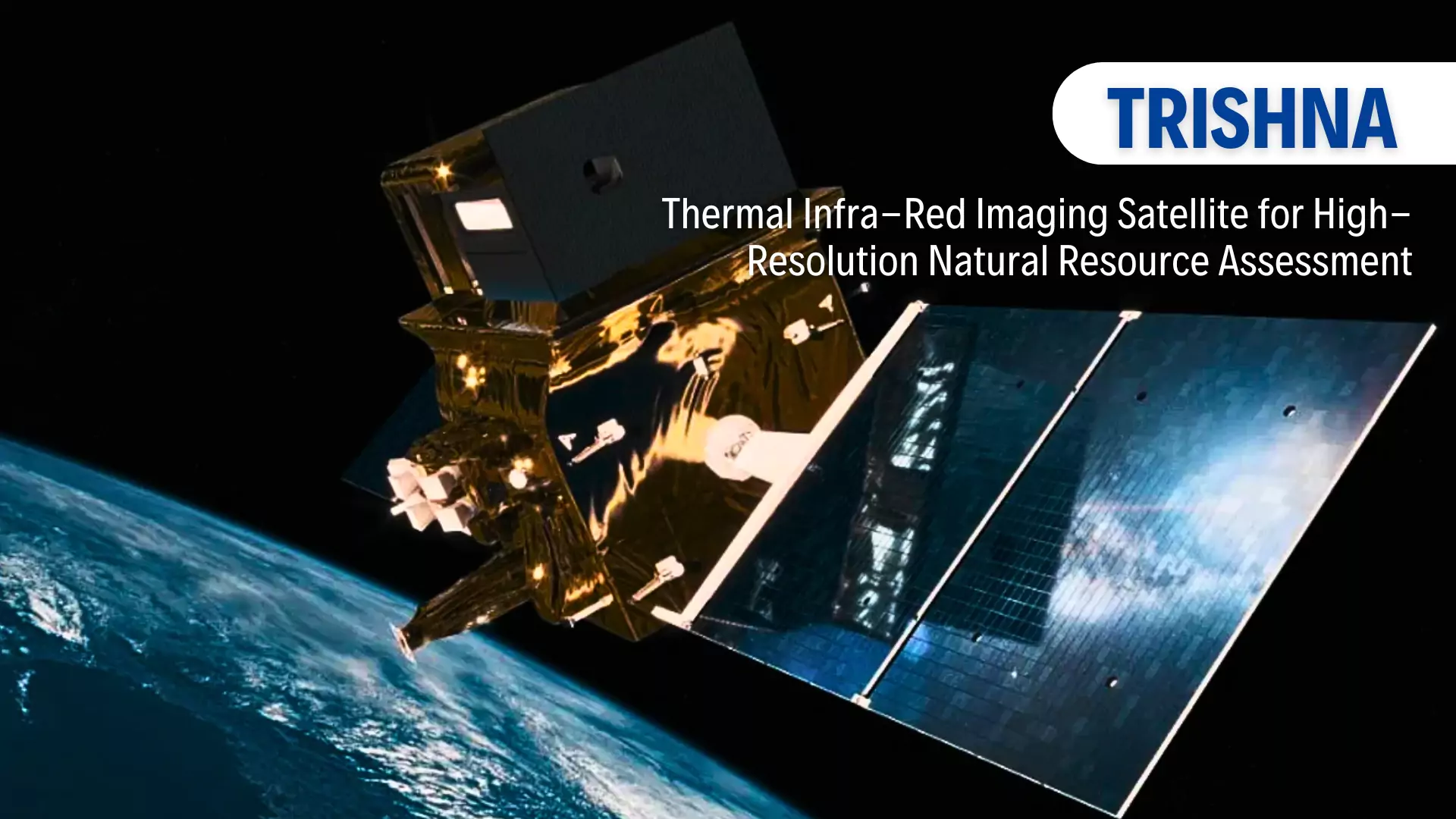The Space Agency ISRO recently announced a satellite mission, TRISHNA. This TRISHNA mission is a joint infrared earth observation satellite mission between India and France.
About TRISHNA Mission
TRISHNA refers to Thermal Infra-Red Imaging Satellite for High-Resolution Natural Resource Assessment.

- Objectives: The Primary Goal of TRISHNA mission is to monitor surface temperature and water management globally.
- It will address extreme heat issues in India and Europe.
- Launch Details
- Tentative Launch: 2025
- Mission Lifespan: 5 years
- Features: There are two primary payloads in satellites.
- The Thermal Infra-Red (TIR) payload
- It will be provided by the French space agency CNES
- The TIR payload will feature a four-channel long-wavelength infrared imaging sensor for studying high-resolution surface temperatures.
- It will also map the heat radiated back from land in different regions.
- The Visible Near Infrared-Red Short Wave Infrared-Red (VNIR-SWIR) payload
- It will be developed by ISRO
- The VNIR-SWIR payload will map the reflectivity (albedo) of the Earth’s surface across seven bands.
- This mapping will measure the amount of heat reflecting off the Earth’s surface.
- It will also calculate various biophysical and radiation budget variables.
Enroll now for UPSC Online Course
Benefits of TRISHNA Mission
- Improved Water Management:
- TRISHNA mission will provide data on evapotranspiration.
- Evapotranspiration Monitoring: Includes soil evaporation and water transpiration from plants.
- It helps monitor agricultural water use and maintain soil moisture levels during droughts.
- It also provides vital data to manage the increasing droughts affecting Indian farmers.
- Study of water presence: It will also study water presence and concentration, including melting glaciers, to improve water resource management globally.
- Enhanced Climate Monitoring:
- The mission will track thermal anomalies, surface energy balance, and urban heat islands to understand the impact of climate change.
- It will study aerosols, water vapour, and cloud cover to improve our understanding of atmospheric processes.
- Sustainable Practices Policies:
- The data will be used to develop new policies for sustainable water management by watershed managers, agro-industries, and farmers.
- The high-resolution, high-repeat imaging will improve our understanding of Earth’s natural processes to aid in global climate change mitigation efforts.
- Advancement in Remote Sensing Technology:
- TRISHNA is expected to be a significant advancement in remote sensing technology, which is crucial for monitoring Earth from space during extreme weather events.
Check Out UPSC CSE Books From PW Store
Global Impact of the Trishna Mission
- Contribution to Sustainable Development Goals (SDGs)
- Water Scarcity and Management: Addresses issues related to water scarcity and management (SDG 6).
- Climate Action: Supports initiatives for climate action (SDG 13).
- International Cooperation and Knowledge Transfer
- Strengthening Ties: Enhances cooperation between participating nations.
- Expertise Exchange: Promotes the exchange of expertise in space technology.
- Capacity Building: Facilitates capacity building in space technology among the involved countries.
![]() 8 Jun 2024
8 Jun 2024

